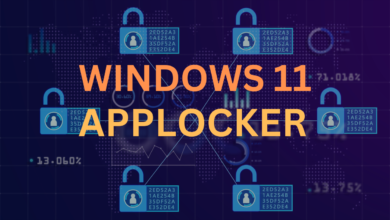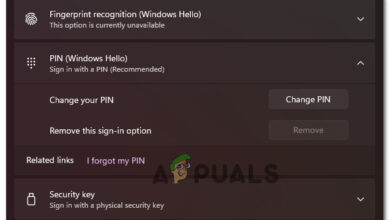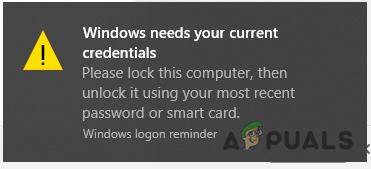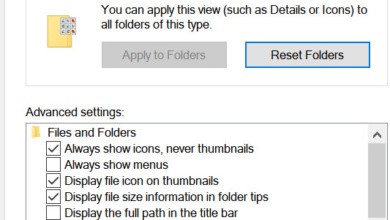How to Prevent Apps from Accessing Calendar on Windows?
The calendar on Windows 10 can be accessed by other applications that have the need for calendar or events on it. By default, the People, Cortana, and Mail will want to have access to your calendar. These applications work together to schedule emails and make appointments by using the contacts list. Cortana also accesses the calendar to show you the appointments for today. It also shows the calendar results in the search results. However, calendar access can be disabled if you do not want Cortana or Emails to access the events or appointments on your calendar. This way you can also keep your events on the calendar private from other apps.

There are several methods through which you can prevent calendar access for applications. We will be showing the default Windows Settings, Group Policy Editor, and the Registry Editor methods. All the below methods lead to disabling the calendar access for applications.
Disabling Calendar Access for Apps through Windows Settings
In the Windows Settings, you can find the toggle for On and Off the access to the calendar for applications. You can also enable and disable access for a specific application by checking the listed applications in the setting. If you install a third-party application that requires access to the calendar, then that application will also be listed there. Follow the below steps to disable the calendar access:
- Press the Windows + I key together to open the Windows Settings. Then click on the Privacy option.
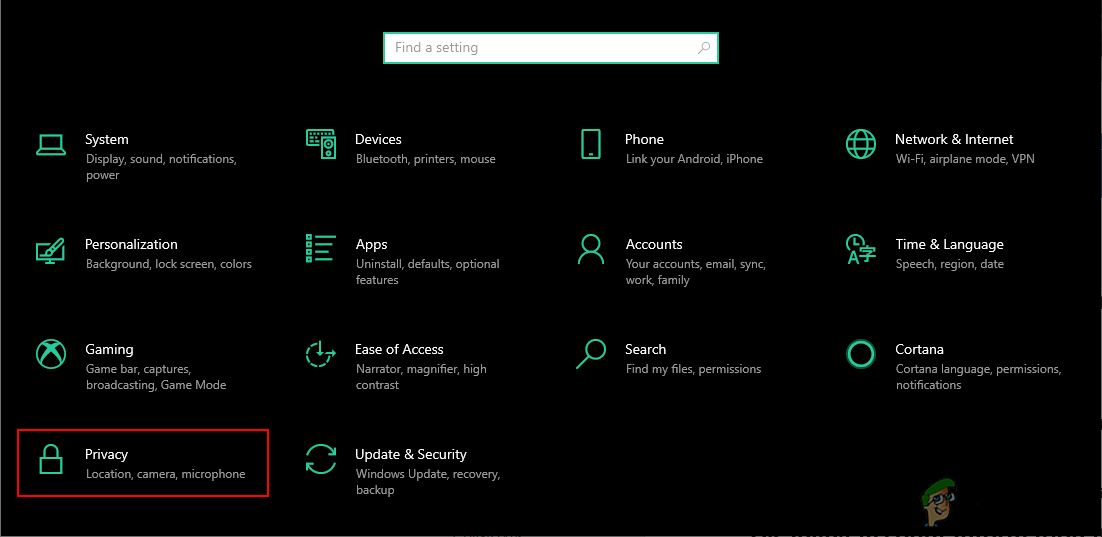
Opening Privacy settings in Windows Settings - In the left pane, click on the Calendar option that is listed under the App permissions. Scroll down and turn Off the Allow apps to access your calendar option. This will disable access for all applications that can access the calendar.

Changing access settings for the calendar - Down below some applications will be listed, you can also disable for any specific application. Once you change this setting, the apps cannot access the calendar anymore.
Disabling Calendar Access for Apps through the Local Group Policy Editor
The Local Group Policy Editor does the same job of disabling the calendar with extra options. Here, you can choose the default option for all applications or set a different setting for any specific application. You need to add applications by the Package Family Names (PFNs). You can search for Package Family Names through the PowerShell. We have also included the steps for searching Package Name or Package Family Name.
Note: If you are using a Windows Home version, then skip this method because the Local Group Policy Editor is not available in the Home version.
However, if you have the Local Group Policy Editor on your system, then follow the below guide:
- Press the Windows + R keys to open a Run dialog. In the Run dialog, type “gpedit.msc” and press the Enter key to open the Local Group Policy Editor.
Note: Choose the Yes option for the User Account Control prompt if it appears.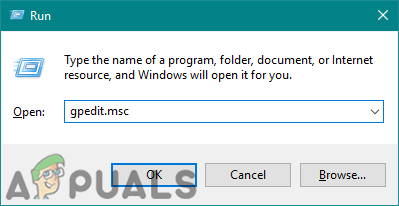
Opening Local Group Policy Editor - Now navigate to the following path in the Local Group Policy Editor window:
Computer Configuration\ Administrative Templates\ Windows Components\ App Privacy
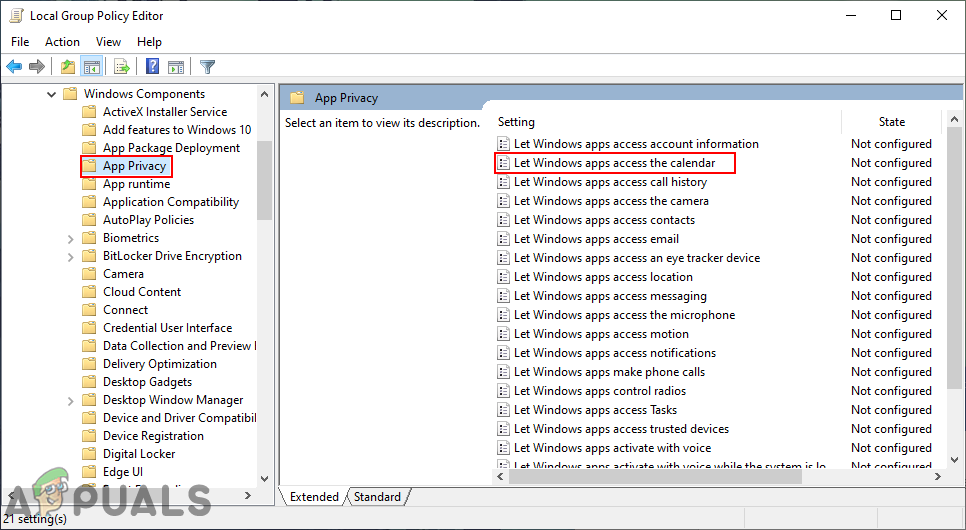
Opening a setting - Double-click on the “Let Windows apps access calendar” setting. Modify the toggle option from Not Configured to Enabled. Then provide the Package Family Names (PFNs) of apps in the following three boxes for different options as stated. To apply these changes, click the Apply/Ok button.
Note: The PFNs added in the screenshot are just to give you the idea about how it will look like.
Disabling calendar access for apps - The Package Family Name (PFN) of an app can be found in the PowerShell. Search PowerShell through the Windows search feature and run it as an administrator. Now type the following command:
Get-AppxPackage -Name "Microsoft.MicrosoftEdge"

Finding the Package Family Name - Microsoft.MicrosoftEdge in the above command is a package name. To find the package names of apps, you can type the following command in PowerShell:
Get-AppxPackage -AllUsers | Select Name, PackageFullName
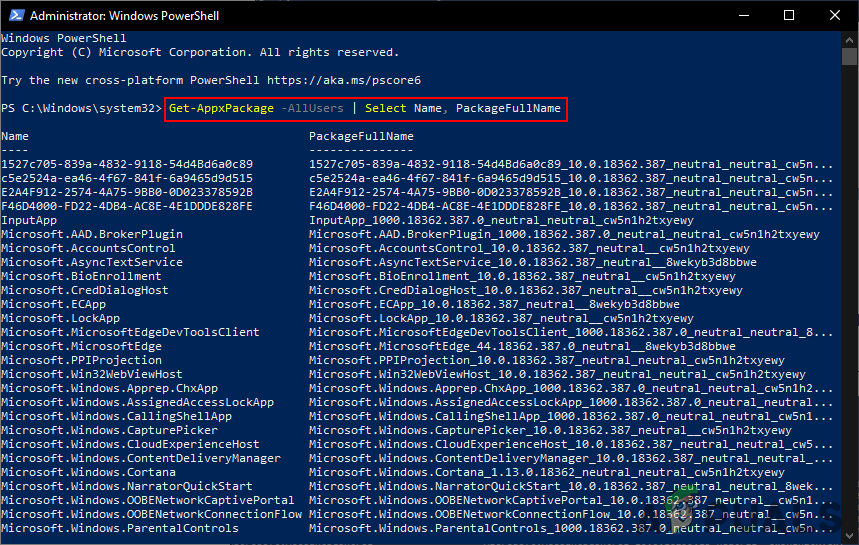
Finding all the package names on your system - By providing the Package Family Name (PFN) in the Force Deny box will disable access to the calendar for those apps.
Disabling Calendar Access for Apps through Registry Editor
The Local Group Policy Editor method will automatically update the Registry for this specific setting. However, if you are directly setting this up in Registry Editor, then you need to create the missing keys and value by yourself. There are different values for each option and if you require only a specific value then you can skip the others. Suppose if you just want a “force deny” value for all applications, then only create that value and not others.
- First, open a Run dialog by holding the Windows key and pressing the R key at the same time. After that, type “regedit” and press the Enter key to open Registry Editor. Choose Yes for the User Account Control (UAC) prompt.
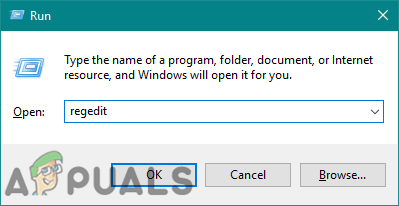
Opening the Registry Editor - Navigate to the following key in the Registry Editor window. If the key is missing, you can just create it by right-clicking on the available key and choosing New > Key:
HKEY_LOCAL_MACHINE\Software\Policies\Microsoft\Windows\AppPrivacy
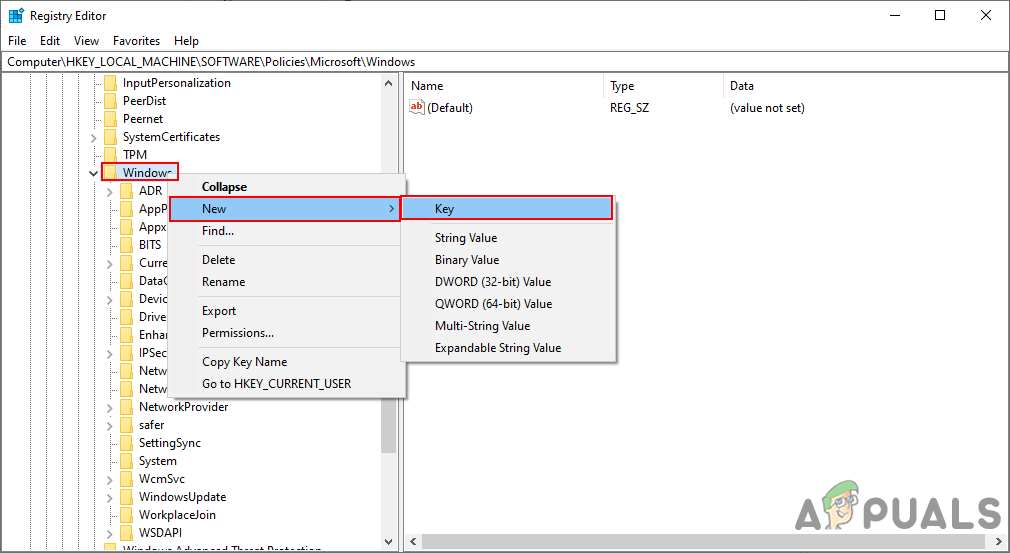
Creating missing key - Right-click on the right pane, choose New > DWORD (32-bit Value), and name it as “LetAppsAccessCalendar“. Double-click on it and change the value data to 2.
Note: The setting in this value will be a default value for all applications. The value data 0 is for the user in control, 1 is for the force allow, and 2 is for the force deny.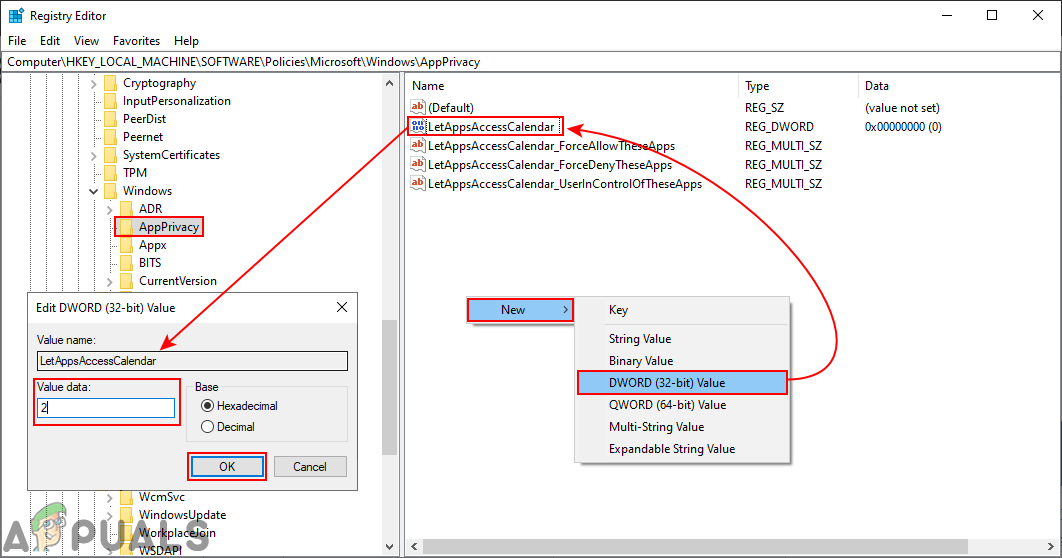
Disabling access for all - If you want to have the three options similar to the Local Group Policy Editor. You can create the three different values for it by right-clicking on the right pane and choosing the New > Multi-String Value option.
- For user in control value, name it as “LetAppsAccessCalendar_UserInControlOfTheseApps“. For force allow value, name it as “LetAppsAccessCalendar_ForceAllowTheseApps“. And for the force deny value, name it as “LetAppsAccessCalendar_ForceDenyTheseApps“.

Creating three different values - Then you can open any value and put the Package Family Names (PFNs) in it. By doing that, it will apply that specific setting for only that specific application. Once everything is configured, make sure to restart your computer to apply changes.

Can change value data in any of three Note: The PFNs added in the screenshot are just to give you the idea about how it will look like.

